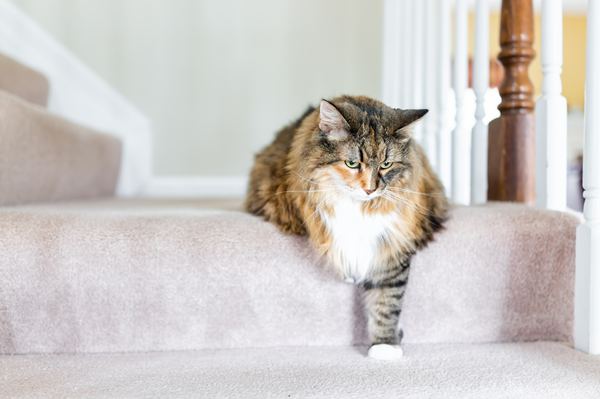
Mobility is a broad term that refers to the general ability to move, such as by walking or running. Functional mobility refers to an animal’s ability to perform everyday tasks like walking, climbing stairs, or getting up from lying down. It focuses on how well the animal can function in their daily life.
Functional mobility considers specific actions related to daily living, while mobility is more general and can include any type of movement.
Arthritis commonly affects both dogs and cats, and negatively impacts their ability to perform everyday tasks like walking, jumping, or climbing stairs. It is critical to recognize signs of functional mobility issues early on, so you can manage pain and improve your pet’s quality of life.
How is functional mobility assessed?
Dogs and cats with arthritis may show subtle signs, like stiffness or reluctance to move. However, subjective observations alone don’t reliably determine the severity of arthritis. That’s where Clinical Metrology Instruments (CMIs) come into play.
- For dogs, the Liverpool Osteoarthritis in Dogs (LOAD) questionnaire helps track mobility by assessing common tasks, such as getting up from lying down or walking on different surfaces. By answering these questions over time, you and your vet can objectively monitor any decline in mobility that signals the need for further intervention.
- For cats, assessing arthritis can be more challenging, as cats are experts at hiding pain. The Montreal Instrument for Cat Arthritis Testing for use by Caretakers (MI-CAT[C]) offers a questionnaire-based approach as LOAD. It helps cat owners gauge how well their cats are moving by focusing on tasks like jumping, grooming, and general activity levels. This tool allows cat owners to identify early signs of arthritis, even if their cat isn’t visibly limping or showing discomfort.
How are CMIs used to monitor and manage arthritis?
Once you’ve established a baseline for your pet’s functional mobility using the CMI, you can help track how well your pet responds to treatments. If the scores worsen, it may indicate that your pet’s current pain management plan isn’t effective and needs adjustment. Conversely, if the scores improve, it may indicate that specific treatments, like medication or physical therapy, are working.
When does your pet need help managing pain?
If your pet’s mobility score shows a decline, it’s time to act. For both dogs and cats, pain management is essential to maintaining functional mobility and improving quality of life. Early intervention through medication, lifestyle changes, or therapeutic exercises can prevent further decline. With tools like LOAD and MI-CAT(C), you and your vet can create a personalized care plan and track its effectiveness.
Monitoring your dog or cat’s functional mobility using CMIs gives you a clearer, more objective view of their arthritis pain. These tools help you identify when your pet needs additional support, ensuring their comfort and mobility for years to come.

